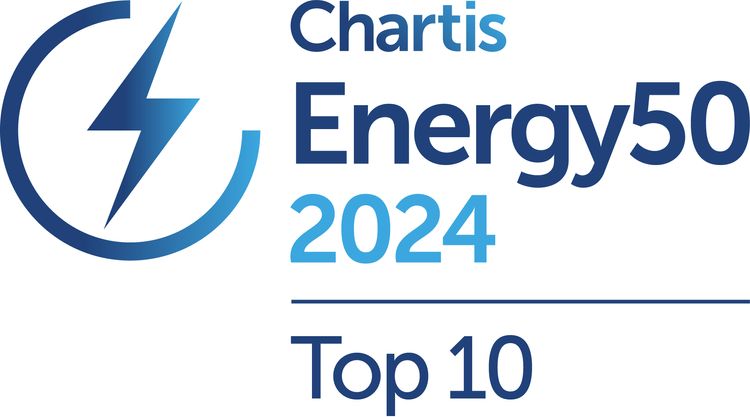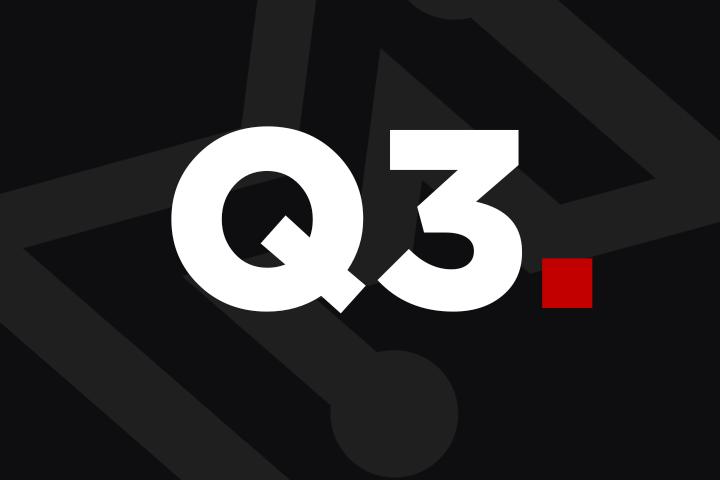Why We Love Open Source Tech and How it Optimizes Our E/CTRM

Open-source software (OSS) runs the digital world and is integral to Molecule’s E/CTRM software. We love it so much that it's one of our core values. We're ardent supporters of open source and a contributor to the open source community.
Even if you’re unfamiliar with open source software, you'll recognize some companies that use it. For instance, if you're a fan of Netflix or found our article on Google, you can thank open source.
The number of applications running on open source continues to grow. Since it has become so prevalent, we want to give you a breakdown of open source tech and why it's so important to us.
Table of Contents
- What is open-source software (OSS)?
- What does Molecule leverage?
- What business value does open source offer?
- Data Protection
- Molecule's open source contribution and culture?
What is open-source software (OSS)?
Open source means the software's source code is publicly available and freely distributable. Developers can then adapt the public code to their personal or business needs, adhering to the associated license constraints.
Soon after the conception of open source code, the Open Source Initiative (OSI) emerged in 1998. The OSI outlines the criteria for open source code as follows:
- Free redistribution
- Allows for derived works
- Integrity of the author's source code
- No discrimination against persons or groups
- No discrimination against fields or endeavors
- Distribution of license
- License must not be specified to a product
- License must not restrict other software
- License must be technology-neutral
As you can see, open source is all about accessibility - which is the opposite of in-house or proprietary software. Proprietary software cannot be modified or distributed, and access is generally limited to owners and those who purchased the software.
We’ve noticed a common misconception is that because proprietary software costs a lot and tends to be created in-house, it’s better and more reliable than open source. However, in many cases, the opposite is true.
"Open-source software was rated equal to or better than proprietary software by 94 percent of respondents."
With fewer people able to access, modify, and enhance proprietary software, it can be much less effective and adaptable than its open source counterparts. Proprietary software is characteristic of legacy solutions, making it difficult for them to adapt to the evolving needs of the E/CTRM industry.
What does Molecule leverage?
We pride ourselves on using the most modern, scalable technology, but that doesn’t mean we arbitrarily hop onto what’s trending. Since all of the technology we leverage undergoes a rigorous planning and testing process, we’re intentional about our selection.
We’ve found that open source offers our application and customers the most optimal risk management experience. It gives us the opportunity to run massive operations without outrageous costs and resources. And it thrives on collaboration and innovation as much as we do.
Some of the open-source software we use includes:
- React: an open source web client framework
- GitLab: the largest open source community in the world
- Go: an open source programming language
- Grafana: an open source data visualization and analysis platform
- Kubernetes: an open source container orchestrator that automates operational tasks
- Linux: an open source operating system
- PostgreSQL: an enterprise open source database
- Python: an open source programming language
- Resque: an open source queuing system that uses Ruby
- Ruby: an open source programming language
75% of Molecule’s overall tooling and ecosystem, as well as 90% of our core application, runs on open source. We only license one commercial tool; the rest of our development tooling is open source software.
Our application runs entirely on Kubernetes and PostgreSQL, and our CI/CD (Continuous Integration / Continuous Delivery) GitOps infrastructure runs on GitLab, with consolidated logging and monitoring on Grafana Labs. Everything runs on Kubernetes and is hosted on AWS.
What business value does open source offer?
Open source offers many benefits for users and developers alike.
“Molecule leverages open-source software because it fosters innovation, enhances code quality and security, and supports the rapid development of our application” - Paul Kaisharis, SVP and Head of Software Engineering
Since it's publicly available, modified frequently, and freely distributable, developers can quickly fix bugs and find solutions to make their software run more effectively instead of coding a complex solution from scratch.
Compared to proprietary software, open source is:
- More transparent
- More accessible
- More reliable
- More flexible
- More proven
- More cost-efficient
- More secure
With the essential building blocks of the code in place, open source drives productivity by significantly cutting the costs and time associated with development and vendor lock-in.
Although vendor and technology lock-in is still possible with open-source software, it’s easier to avoid than proprietary software.
According to a recent Forbes article, you should “choose an open source technology with broad adoption . . . Technologies like PostgreSQL, Linux, Kubernetes, and Python are not tied to any particular vendor’s commercial success or business decisions”
If you choose a legacy E/CTRM solution, on the other hand, they’ll likely use proprietary software, which makes switching vendors difficult and expensive. Not only is it expensive for you as the customer, but it’s also expensive and time-consuming for them to update and innovate.
This leaves you trapped with an outdated E/CTRM that doesn’t meet your business needs or the needs of the changing trading industry. However, if you choose a more modern, scalable E/CTRM solution that values innovation, you’ll want to sign another contract, not be forced into it.
Data Protection
With any software, protecting your data should always be your top priority. Some people worry open source puts their data at risk. However, you don’t have to sacrifice your security when you use open source software.
When you’re managing risk for energy and commodity trading, you need to ensure your company’s privacy is protected.
Our DevOps team constantly monitors our code to ensure it remains safe, secure, and protected. Our code goes through static and dynamic testing daily to expose any vulnerabilities that may be present. Any change our team makes to Molecule’s code base must pass extensive testing and analysis procedures to maintain our application’s stability.
To ensure our code's quality, we only use highly rated open source code that is frequently updated and actively collaborated on. We also regularly update the libraries we use, so our code remains responsive and current.
Molecule’s open source contributions and culture
We love open source because, like Molecule, it thrives on collaboration and community.
Not only do we run on open source, but we also give back to the community by sharing our open source on the Molecule GitHub page - complete with over 44 repositories. To help others as much as the open source community has helped us, we contribute to existing projects in our code base, including additional features and bug fixes.
Through our GitHub, you can access projects, including our CME STP Adapter, which allows you to download trades on NYMEX, COMEX, DME, CBOT, CME Clearing Europe, CDS, and CME.
Open source is more than the foundation of Molecule’s application. It’s a culture of community, collaboration, and innovation.





